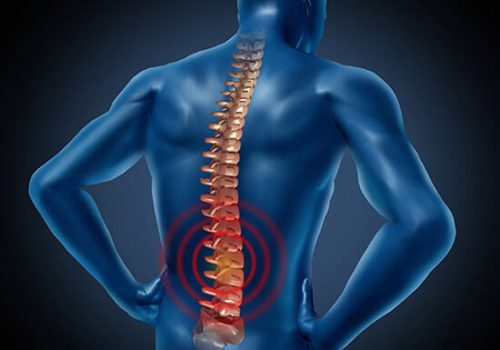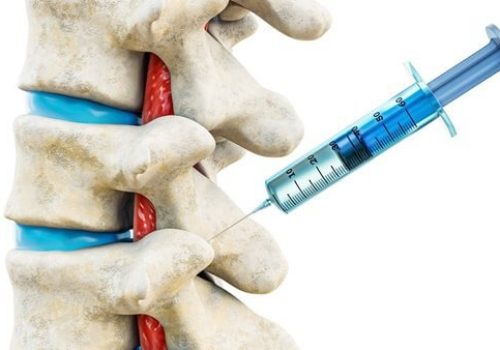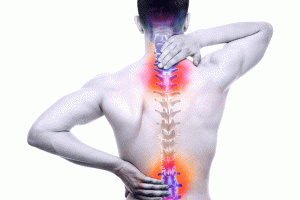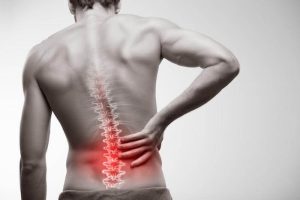- دکتر علی شمسا
- Services
- Lumbar disc surgery

Lumbar disc surgery is a therapeutic method to heal the pain caused by the protruding discs between the vertebrae of the end part of the spine. If there is no treatment, the nerves around the vertebral column may be put under double pressure and weakness and numbness may be observed in a part of the body over time. In this article, we talk more about lumbar disc surgery and its various aspects.
Table of Contents
Different types of lumbar disc surgery
Different types of lumbar disc surgery are divided into invasive and minimally invasive. In this way, all the surgical methods in which the doctor uses operating tools to cut an area of the body are referred to as invasive surgery. With the incredible progress in the medical industry, today there are various types of minimally invasive surgeries that allow the surgeon to perform the operation without the least damage to the tissue and nerves. In this way, the recovery period and hospitalization and post-operative discomforts are also reduced. But each of these two groups are divided into other parts, which are also worth mentioning.
All kinds of invasive surgeries
When we look at lumbar disc surgery, we see the invasive method as the best and most effective method possible from the past until now. This type of surgery can be performed with two methods of open operation and microscopic open operation and includes the following two types:
Lumbar disc surgery lamingectomy (foraminotomy or discectomy)
Microscopic lumbar disc surgery

Types of minimally invasive surgeries
It is natural that there is a need for a special procedure to perform lumbar disc surgery when there is no incision to be made in the skin or any of the internal organs of the body. Often, in this method, doctors try to access the disc space by piercing the desired part and inserting a needle or endoscope. Thus, it includes two methods as follows:
Laser lumbar disc surgery
Endoscopic lumbar disc surgery

Reasons for the occurrence of lumbar disc among people
Normally, it is less common for a person to suffer from a lumbar disc, only at a certain time when the body is subjected to sudden pressure, impact or shock, people suffer from such a painful and dangerous complication. Among these conditions, we can mention carrying heavy objects, non-original sports, severe accidents and sudden rotation of the back. Of course, obesity and overweight and aging can also be causes of this problem. Also, multiple pregnancies in women, diseases related to bone destruction, incorrect sitting of workers for a long time, etc. can also affect the aggravation of this condition and make a person need lumbar disc surgery.

Who needs lumbar disc surgery?
At first, skilled doctors try to treat the patient with the help of pharmaceutical treatments and restore health to him regardless of surgery and its disadvantages. But in case of non-surgical procedures such as taking anti-inflammatory drugs, painkillers, physiotherapy, injecting steroids, etc., and not seeing improvement, the doctor inevitably prescribes lumbar disc surgery to heal the patient’s pain, suffering and discomfort. In fact, in many cases, people stop even doing their daily activities due to lumbar disc, and in this case, surgery is considered a way to save them.
Approved medical alternatives to lumbar disc surgery
Sometimes the doctor realizes after examination and clinical investigations, instead of lumbar disc surgery, he can use alternative methods that are mostly formed around the injection of special substances. In this way, it is easier and less invasive to treat the patient. These alternative methods can be mentioned:
Infusion of platelet-rich plasma
Ozone injection
Epidural steroid injection
Desco gel injection
Possible risks and complications of lumbar disc surgery
Depending on the physical resistance of people and the type of body’s reaction to surgery, complications sometimes appear in different ways. These discomforts can start from infection in the incision area and include recurrence of the disease, lung embolism, nerve damage, problems in the urinary tract, etc. Although about 80% of lumbar disc surgeries have been successfully performed, some of them have been unsuccessful and the disease has returned.
Care after lumbar disc surgery
Do not neglect dressings after lumbar disc surgery. Also, following some tips such as continuous use of a medical belt, avoiding bathing for 3 to 5 days after the operation, using support pillows while sleeping, etc., can speed up the healing of wounds in addition to the complete recovery of the disc. Among other points, the following can be mentioned:
Not using directly on the wound
Performing soft sports activities and gentle exercises to improve blood circulation
Using ice therapy to reduce inflammation and swelling in the operated area
Regular physiotherapy and rehabilitation
Attention to regular post-operative visits



















